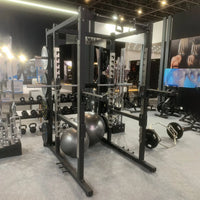Pregnancy is a beautiful yet physically demanding journey. As your body changes to accommodate your growing baby, it's important to stay active with safe, supportive exercises. One of the most versatile and gentle tools for prenatal fitness is the exercise ball, also known as a pregnancy ball or gym ball. These large inflatable balls are not only helpful for stretching and strengthening but also offer significant support during pregnancy.
In this article, we’ll explore the benefits of gym ball exercises during pregnancy, effective and safe pregnancy ball exercises, and practical tips for sitting on an exercise ball while pregnant. Whether you're in your first trimester or nearing delivery, exercise balls can provide the comfort, mobility, and core support you need.
Why Use an Exercise Ball During Pregnancy?
Exercise balls are designed to improve posture, balance, and core strength. During pregnancy, your center of gravity shifts, your back bears more weight, and your joints loosen due to hormonal changes. Gym ball exercises provide a safe and low-impact way to stay active and ease common discomforts.
Key Benefits of Gym Ball Exercises During Pregnancy:
-
Relieves back and pelvic pain
Gently stretching on an exercise ball can release tension in the lower back and pelvis. -
Improves posture and spinal alignment
Sitting upright on a ball engages your core and helps realign the spine. -
Encourages optimal fetal positioning
Regular use of a pregnancy ball can help position the baby correctly for birth. -
Strengthens pelvic floor muscles
Certain pregnancy ball exercises help build strength in the pelvic floor, supporting labor and recovery. -
Promotes relaxation and flexibility
Gentle bouncing or rocking motions can soothe both the body and mind.
Safe Pregnancy Ball Exercises for Expecting Moms
Before beginning any workout during pregnancy, consult your doctor or midwife—especially if you have high-risk conditions or complications. Once cleared, start with these safe, gentle exercises using a pregnancy ball.
1. Pelvic Tilts (Seated)
How to do it:
Sit on the exercise ball with feet flat on the floor, hip-width apart. Slowly tilt your pelvis forward and backward in a rocking motion.
Benefits:
Relieves lower back pain, strengthens the pelvic area, and improves balance.
2. Hip Circles
How to do it:
While sitting on the ball, make slow, controlled circular movements with your hips—clockwise, then counterclockwise.
Benefits:
Loosens hip muscles and relieves tightness in the lower back.
3. Wall Squats with Ball Support
How to do it:
Place the exercise ball between your lower back and a wall. Slowly squat down while keeping your back supported by the ball. Return to standing.
Benefits:
Strengthens legs and glutes while maintaining good form with low joint impact.
4. Child’s Pose Stretch with Ball
How to do it:
Kneel on the floor with the ball in front of you. Extend your arms forward, placing your hands or forearms on the ball, and gently roll it forward as you lower your chest.
Benefits:
Stretches the back, shoulders, and hips—great for stress relief and flexibility.
5. Bridging with Feet on the Ball (Second Trimester Only)
How to do it:
Lie on your back (only if your healthcare provider allows) with your feet on top of the exercise ball. Lift your hips slowly into a bridge position, then lower down.
Benefits:
Strengthens glutes and lower back. Note: avoid this after the second trimester or if you feel lightheaded.
Sitting on an Exercise Ball While Pregnant
Many expecting moms find relief just by sitting on an exercise ball while pregnant. Here’s why:
-
Improves posture: Unlike chairs, which may encourage slouching, exercise balls engage your core muscles naturally.
-
Reduces lower back pain: The upright sitting position can ease lumbar discomfort.
-
Aids labor preparation: Gentle bouncing or rocking on the ball can help open the pelvis and prepare the body for birth.
-
Useful during labor: Midwives and doulas often recommend using a gym ball in early labor to ease contractions and promote relaxation.
Tip: Choose a ball size that allows your knees to be level with or slightly below your hips when seated. For most women, a 65 cm ball works best (check based on your height).
Tips for Using Exercise Balls Safely During Pregnancy
-
Always use the ball on a non-slip surface.
-
Stay close to a wall or have a sturdy chair nearby for balance.
-
Avoid exercises that require lying flat on your back after the first trimester.
-
Wear supportive shoes or go barefoot for better stability.
-
Don’t overexert—listen to your body and stop if you feel dizzy, uncomfortable, or short of breath.
Final Thoughts
Staying active during pregnancy doesn’t mean intense workouts or complicated routines. Sometimes, all it takes is a pregnancy ball and a few minutes of gentle movement each day. The benefits of gym ball exercises go far beyond physical fitness—they support your body, ease discomfort, and prepare you for one of life’s biggest journeys.
Whether you're practising pelvic tilts, stretching, or simply sitting on an exercise ball while pregnant, this simple tool can offer comfort, strength, and peace of mind.
Ready to get moving? Explore trusted fitness equipment suppliers UAE, Garner Fitness Supplies, to find the perfect exercise ball and start your prenatal fitness journey today!




0 comments